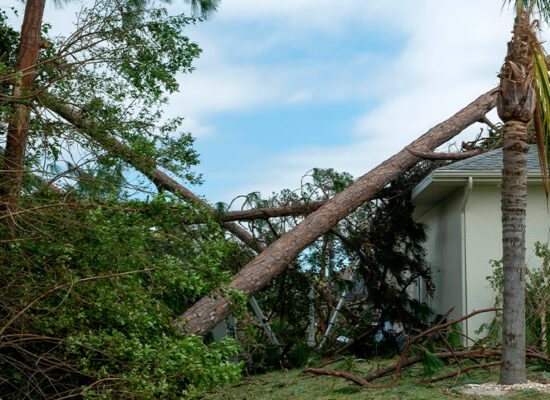Assessing and Documenting Storm Damage – Texas Storm Damage Claims 101
When your property has been damaged by a storm, accurately assessing and documenting the damage is crucial for a successful insurance claim. In this second part of our comprehensive guide by Palker Law Firm, we’ll provide a step-by-step guide on how to assess and document storm damage, ensuring you have the necessary evidence to support your claim and receive fair compensation.
Step 1: Ensure Safety and Prevent Further Damage
Before assessing the storm damage, prioritize safety for yourself and your loved ones. Check for any potential hazards, such as downed power lines, gas leaks, or structural damage that may pose a risk. After ensuring safety, take reasonable steps to prevent further damage, such as covering broken windows or placing tarps over damaged roofs.
Step 2: Conduct a Thorough Assessment of the Damage
Once it is safe to do so, inspect your property thoroughly to assess the extent of the damage. Pay attention to both the exterior and interior of your property, looking for damage to the roof, siding, windows, doors, and other structural elements. Inside, check for water damage, broken fixtures, and damaged personal belongings. It’s also helpful to make a list of damaged items and their approximate value.
Step 3: Take Clear and Detailed Photographs
Photographs are essential for documenting the damage and providing evidence for your insurance claim. Take clear and detailed photographs of all damaged areas, both inside and outside your property. Be sure to capture different angles and close-ups of specific damage, such as cracked windows or dented roofing. Additionally, if possible, take photographs of the property before the storm to provide a comparison.
Step 4: Obtain Professional Assessments and Estimates
For complex or extensive damage, consider obtaining professional assessments and estimates from contractors, roofers, or other relevant specialists. These professionals can provide detailed reports on the damage, including the cause, extent, and necessary repairs, which can be invaluable in supporting your claim. Be sure to keep copies of all reports and estimates for your records.
Step 5: Organize and Preserve Documentation
Proper documentation is key to a successful storm damage claim. In addition to photographs and professional assessments, gather other relevant documents, such as receipts for damaged items, repair estimates, and any temporary living expenses incurred due to the storm. Organize these documents in a safe and accessible location, as you’ll need them when filing your claim and negotiating with the insurance company.
Step 6: Contact Your Insurance Company
Once you’ve assessed and documented the damage, contact your insurance company to report the incident and initiate the claim process. Provide them with the necessary documentation, including photographs and professional assessments, to support your claim. Be sure to keep detailed records of all communication with the insurance company, as this information may be valuable during the negotiation process or in the event of a dispute.
Step 7: Consult a Storm Damage Lawyer
If you encounter difficulties during the claim process or suspect that your claim is being wrongfully denied, delayed, or underpaid, consider consulting a storm damage lawyer from Palker Law Firm. An experienced lawyer can help you navigate the complex insurance claim process, negotiate with the insurance company on your behalf, and ensure that you receive fair compensation for the storm damage to your property.
Assessing and documenting storm damage is a crucial step in ensuring a successful insurance claim. By following this step-by-step guide from Palker Law Firm, you can gather the necessary evidence to support your claim and receive fair compensation for the damage to your property.
Contact The Texas Storm Damage Lawyers At Palker Law Firm Today
Don’t let the challenges of the storm damage claim process overwhelm you. With the expert guidance and support of Palker Law Firm, you can overcome these obstacles and secure the compensation you deserve. If you’re facing difficulties with your storm damage claim or need professional advice, don’t hesitate to contact our experienced team of attorneys. We’re committed to fighting for your best interests and helping you rebuild your life after storm damage. To schedule a free consultation and discuss your case, call us at 1-866-352-1832 or visit our offices. Don’t wait any longer—partner with Palker Law Firm today and take the first step towards a successful resolution of your storm damage claim.
[wpforms id=”162″]
Texas Storm Damage Claims 101 – A Comprehensive Guide by Palker Law Firm






